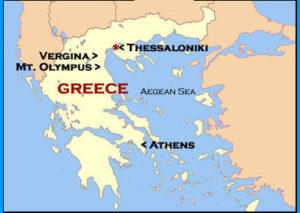
Thessaloniki is the second largest city in Greece located in the northern part of the country. You can look across the bay of the Aegean Sea to see Mt. Olympus
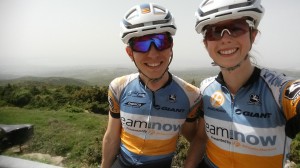
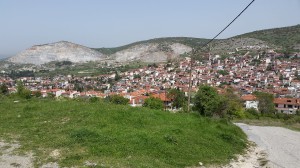 The day before the race, we traveled the several hours southwest to the smaller town of Lamia, which based on everyone’s reaction, was a very odd place to hold a race. We wanted to pre-ride at least a portion of the 40km point to point race so we headed towards the race start about 23 km from Lamia after picking up our packets. Soon we were headed up endless switchbacks and Lamia faded below us in some truly amazing mountain scenery. However, the isolation and elevation were definitely making me wonder what I got myself into. Alex’s mom, Terri, was our race support for the weekend and handled the mountain roads in a manual van like a champ. She dropped us off at the start and somewhat reluctantly continued on to the village we hoped to end up. The portions of the course we rode confirmed our thoughts that we just might be in over our heads. The climbs were open, sustained and wonderful but the singletrack sections were like nothing we have in Michigan (understatement). Thankfully, the ratio of mountain roads to singletrack was manageable and it really was an awesome, real mountain bike course.
Day 1- 40k point to point
The next morning after a restless and anxious night, we headed up the mountain again, thankful we had scoped it out the day before. We joined a small contingent of Greek, Bosnian, German and Belgian riders at the modest start area. Although the race instructions were announced in careful English, Greek was the dominant language (including Terri and Alex), which contributed to the disorienting and surreal experience. Since it was a logistically difficult and new race, the start lists were very small with only four women and eight men lining up. Terri was armed with an official feed zone tag and quickly befriended the other coaches and support crews.
Although the starting miles were open and downhill, the men gunned it from the line and I watched Alex disappear, hoping for the best. Two minutes later, my small women’s contingent headed off. Although I had been planning on starting conservatively on the downhill start to assess the other riders’ singletrack skills, the switch clicked in my brain that turns me into a different cyclist when I’m racing. The best Greek rider, Varvara Fasoi, attacked off the line and the other girls didn’t respond so I led the chase. I had a fleeting sense of optimism as I kept her in sight but just a couple curves up the road, I saw Alex fixing a flat. I considered that he needs to figure out how to make peace with the bike gods or Greek gods or whoever can help his terrible racing luck, but I tried to shake it off and hoped it was fixable so he could finish and have another chance to race.
The first extended road climb further shattered the women’s field and I held second but had lost sight of Varvara on the singletrack. To my relief, Alex caught me at the top and disappeared into the mystery of the portion of the course we did not pre-ride.
Although I usually wish for climbs, the backside of the course was undeniably more than I bargained for. The loose road climbs were relentless and steep enough that I ran out of gears and seriously contemplated getting off my bike and walking (and I thought I was a climber).
And to make matters worse, I came upon Alex again waiting for me so he could use my tube and pump after another flat. (The Greek racers use tougher tires, the whole country is comprised of sharp rocks).
Considering the circumstances, I still felt pretty good and was pleasantly surprised I was holding a reasonable gap to Varvara and had not been caught from behind over halfway through the race. However, I should have known that it couldn’t be that easy. With about four miles to go I also got a flat that wasn’t sealing. Without my own tube, I didn’t have many options since everyone else was racing 29ers. I knew I had to make it work to stay in the hunt and I resigned to hiking my bike the final four miles, conceding a lot of time and ultimately finishing last. Major bummer for both of us but I was pleased with how I was riding before disaster struck and we both lived to race another day.
The day before the race, we traveled the several hours southwest to the smaller town of Lamia, which based on everyone’s reaction, was a very odd place to hold a race. We wanted to pre-ride at least a portion of the 40km point to point race so we headed towards the race start about 23 km from Lamia after picking up our packets. Soon we were headed up endless switchbacks and Lamia faded below us in some truly amazing mountain scenery. However, the isolation and elevation were definitely making me wonder what I got myself into. Alex’s mom, Terri, was our race support for the weekend and handled the mountain roads in a manual van like a champ. She dropped us off at the start and somewhat reluctantly continued on to the village we hoped to end up. The portions of the course we rode confirmed our thoughts that we just might be in over our heads. The climbs were open, sustained and wonderful but the singletrack sections were like nothing we have in Michigan (understatement). Thankfully, the ratio of mountain roads to singletrack was manageable and it really was an awesome, real mountain bike course.
Day 1- 40k point to point
The next morning after a restless and anxious night, we headed up the mountain again, thankful we had scoped it out the day before. We joined a small contingent of Greek, Bosnian, German and Belgian riders at the modest start area. Although the race instructions were announced in careful English, Greek was the dominant language (including Terri and Alex), which contributed to the disorienting and surreal experience. Since it was a logistically difficult and new race, the start lists were very small with only four women and eight men lining up. Terri was armed with an official feed zone tag and quickly befriended the other coaches and support crews.
Although the starting miles were open and downhill, the men gunned it from the line and I watched Alex disappear, hoping for the best. Two minutes later, my small women’s contingent headed off. Although I had been planning on starting conservatively on the downhill start to assess the other riders’ singletrack skills, the switch clicked in my brain that turns me into a different cyclist when I’m racing. The best Greek rider, Varvara Fasoi, attacked off the line and the other girls didn’t respond so I led the chase. I had a fleeting sense of optimism as I kept her in sight but just a couple curves up the road, I saw Alex fixing a flat. I considered that he needs to figure out how to make peace with the bike gods or Greek gods or whoever can help his terrible racing luck, but I tried to shake it off and hoped it was fixable so he could finish and have another chance to race.
The first extended road climb further shattered the women’s field and I held second but had lost sight of Varvara on the singletrack. To my relief, Alex caught me at the top and disappeared into the mystery of the portion of the course we did not pre-ride.
Although I usually wish for climbs, the backside of the course was undeniably more than I bargained for. The loose road climbs were relentless and steep enough that I ran out of gears and seriously contemplated getting off my bike and walking (and I thought I was a climber).
And to make matters worse, I came upon Alex again waiting for me so he could use my tube and pump after another flat. (The Greek racers use tougher tires, the whole country is comprised of sharp rocks).
Considering the circumstances, I still felt pretty good and was pleasantly surprised I was holding a reasonable gap to Varvara and had not been caught from behind over halfway through the race. However, I should have known that it couldn’t be that easy. With about four miles to go I also got a flat that wasn’t sealing. Without my own tube, I didn’t have many options since everyone else was racing 29ers. I knew I had to make it work to stay in the hunt and I resigned to hiking my bike the final four miles, conceding a lot of time and ultimately finishing last. Major bummer for both of us but I was pleased with how I was riding before disaster struck and we both lived to race another day.
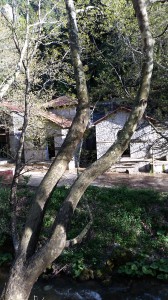
It was a slight consolation that I was essentially hiking through an enchanted forest. It definitely could have been worse.
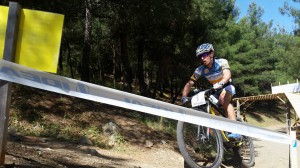 Day 3- Short Track Circuit Race
The circuit race was held on the same course as the TT- four laps for the women and five for the men. This was possibly the most mentally challenging race going in because of the fatigue level and the technical and physical demands of the course, this time repeated over and over. I felt pretty terrible the morning of the race and was off the back immediately on the downhill start. I managed to rally and catch two of my competitors but I couldn’t match Lejla (Bosnia) on the downhills and settled for third.
With the mission of holding on to the field as long as possible, Alex battled Theodoros Petridis, the whole race, only dropping back after an endo from a rear brake issue (only flesh wound souvenirs).
Overall it was the coolest, most epic experience ever. Although the results might show the Americans tailing at the bottom of the G.C. results, there is something to be said about jumping into a deep pool without a life vest and making it work. Our perspective of what is difficult has been shifted which can be applied to racing this season and beyond. And if nothing else, U.S. mountain bike racing here we come!
The post Our Big, Fat Greek Adventure appeared first on Team Athletic Mentors.
Day 3- Short Track Circuit Race
The circuit race was held on the same course as the TT- four laps for the women and five for the men. This was possibly the most mentally challenging race going in because of the fatigue level and the technical and physical demands of the course, this time repeated over and over. I felt pretty terrible the morning of the race and was off the back immediately on the downhill start. I managed to rally and catch two of my competitors but I couldn’t match Lejla (Bosnia) on the downhills and settled for third.
With the mission of holding on to the field as long as possible, Alex battled Theodoros Petridis, the whole race, only dropping back after an endo from a rear brake issue (only flesh wound souvenirs).
Overall it was the coolest, most epic experience ever. Although the results might show the Americans tailing at the bottom of the G.C. results, there is something to be said about jumping into a deep pool without a life vest and making it work. Our perspective of what is difficult has been shifted which can be applied to racing this season and beyond. And if nothing else, U.S. mountain bike racing here we come!
The post Our Big, Fat Greek Adventure appeared first on Team Athletic Mentors. 



 Our Hockey Site
Our Hockey Site Team AM
Team AM


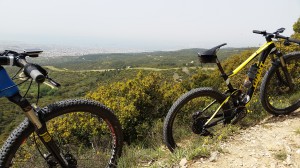
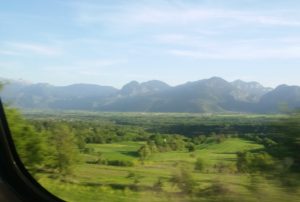
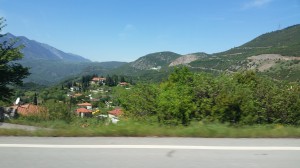
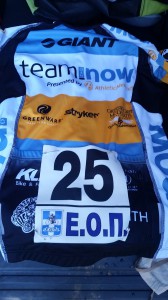
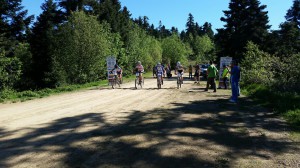
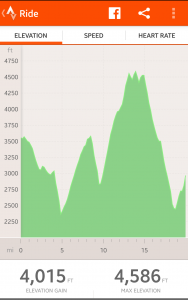
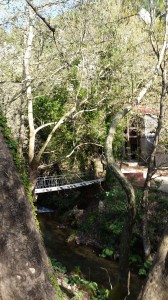
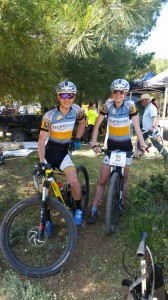
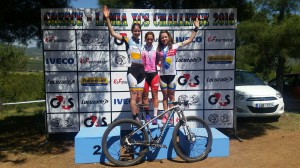
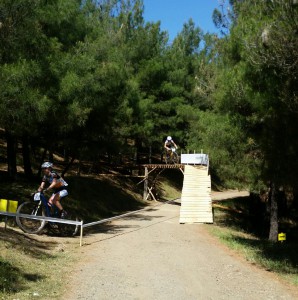
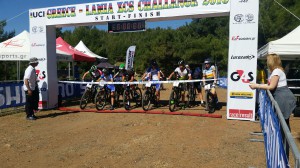
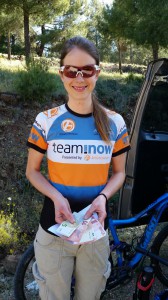
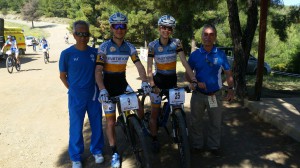
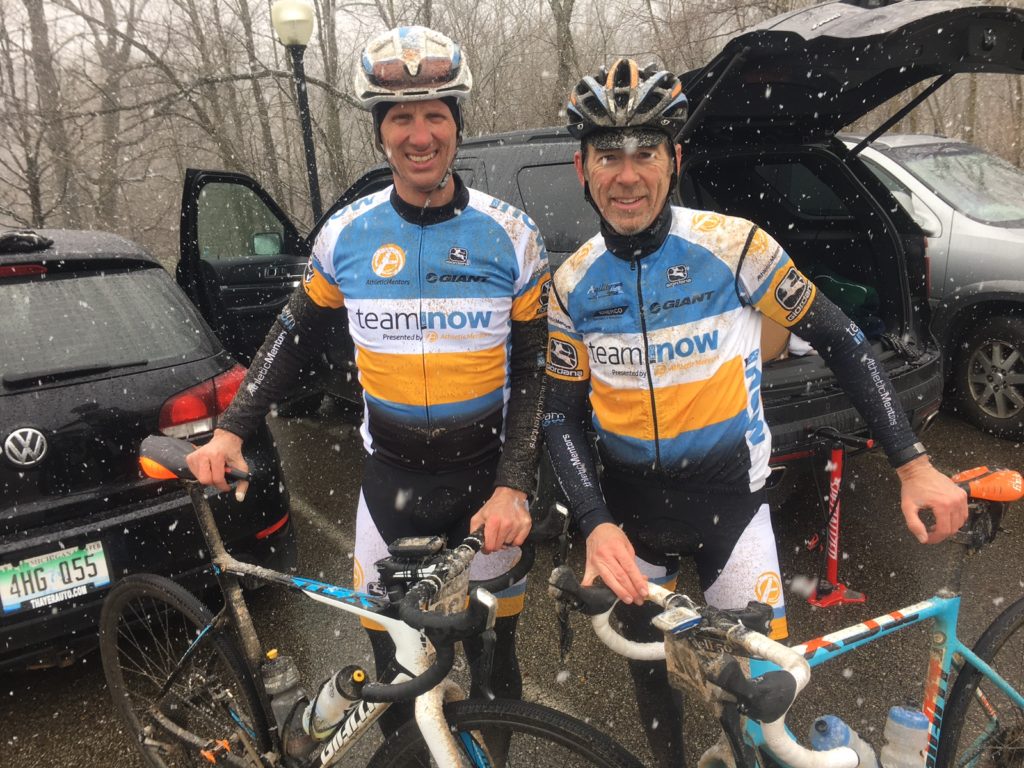

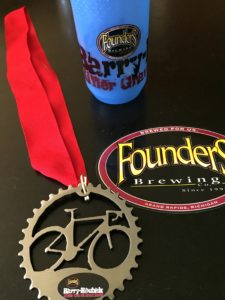
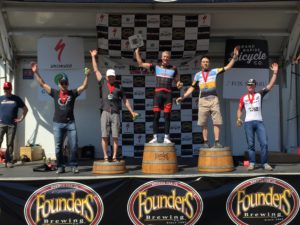
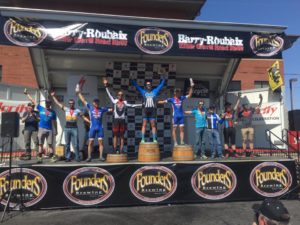 lead group and Daniel Yankus found himself in a small group of leaders. But, with so far to the finish, the group wasn’t able to unite in purpose, allowing the group swell once again to more than 20.When the course headed south for the final time, the attacks came quickly, and Daniel engaged a counter attack, putting himself into a small lead group. This lead group of about 12 rolled into town. But, Dan, with tired and cramping legs, found the chaotic scramble through the 22 miles finishers too much to mount a sprint for victory. Even without a sprint, though, Daniel earned a podium 7th with Cory narrowly missing top 20, rolling in 21st.
The Men’s “Thriller” 36 mile race is divided into many age categories due to the incredible number of riders.
lead group and Daniel Yankus found himself in a small group of leaders. But, with so far to the finish, the group wasn’t able to unite in purpose, allowing the group swell once again to more than 20.When the course headed south for the final time, the attacks came quickly, and Daniel engaged a counter attack, putting himself into a small lead group. This lead group of about 12 rolled into town. But, Dan, with tired and cramping legs, found the chaotic scramble through the 22 miles finishers too much to mount a sprint for victory. Even without a sprint, though, Daniel earned a podium 7th with Cory narrowly missing top 20, rolling in 21st.
The Men’s “Thriller” 36 mile race is divided into many age categories due to the incredible number of riders. 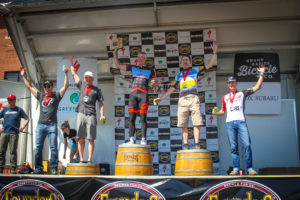 This race is the second to go off with the younger men rolling out first and each age group rolling out in 2 minute increments until the last group of men, the oldest riders, and the fat bike division start their race. We had several Team OAM NOW/Athletic Mentors Masters Men racing the 36 mile race. One team member landed on the podium, taking his place among the fastest Masters men of the day. Rich Landgraff placed 2nd in his age group, earning a coveted podium spot.
The Women’s “Thriller” 36 mile race started after all of the men, which created quite a different race for the fastest of the women. The entire race was spent using bike handling skills to weave through thousands of men, while also managing the dirt, gravel, sand, mud, and potholes. The women started fast and kept on the gas from the start to the end. By 10 miles in, the lead group of women was down to about five riders. After navigating Sager road, there were three.
This race is the second to go off with the younger men rolling out first and each age group rolling out in 2 minute increments until the last group of men, the oldest riders, and the fat bike division start their race. We had several Team OAM NOW/Athletic Mentors Masters Men racing the 36 mile race. One team member landed on the podium, taking his place among the fastest Masters men of the day. Rich Landgraff placed 2nd in his age group, earning a coveted podium spot.
The Women’s “Thriller” 36 mile race started after all of the men, which created quite a different race for the fastest of the women. The entire race was spent using bike handling skills to weave through thousands of men, while also managing the dirt, gravel, sand, mud, and potholes. The women started fast and kept on the gas from the start to the end. By 10 miles in, the lead group of women was down to about five riders. After navigating Sager road, there were three. 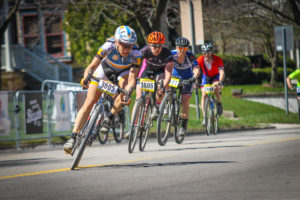
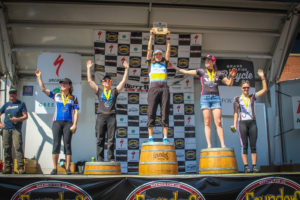
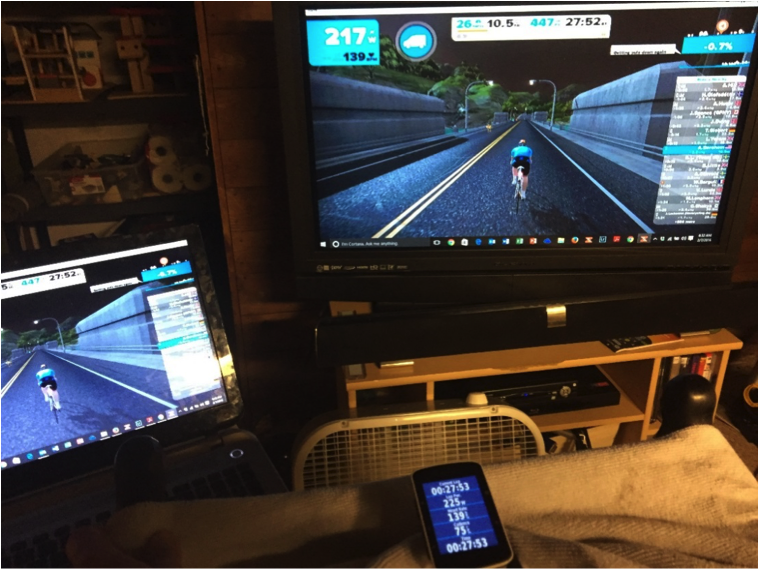
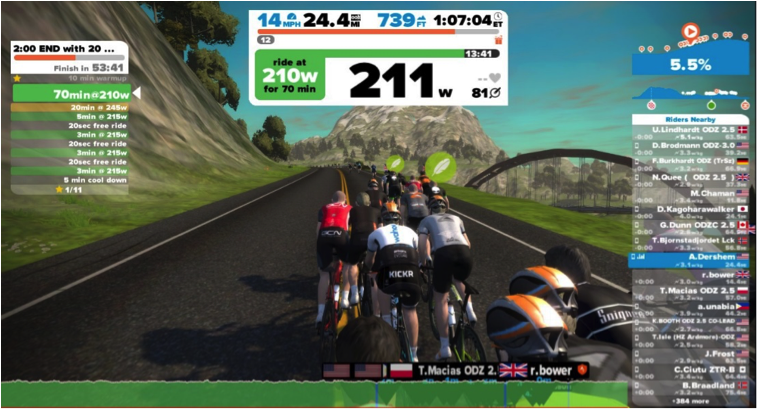
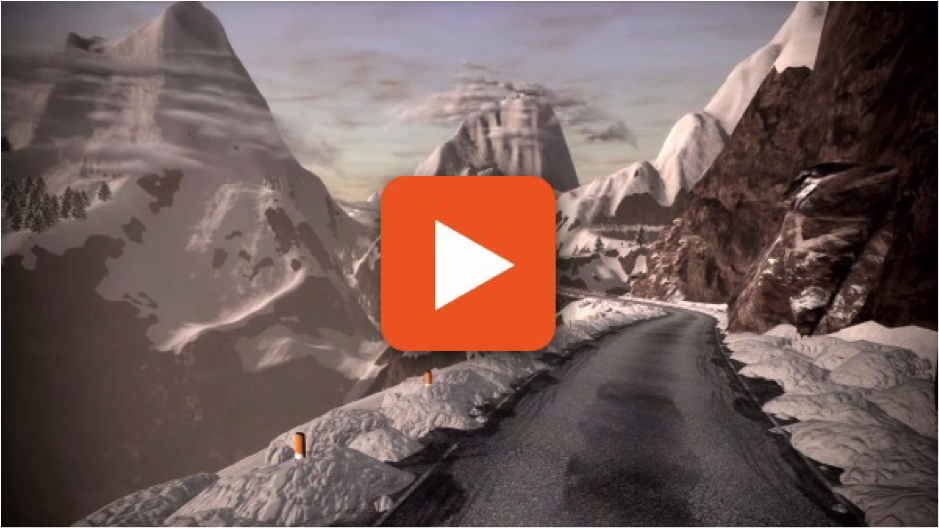
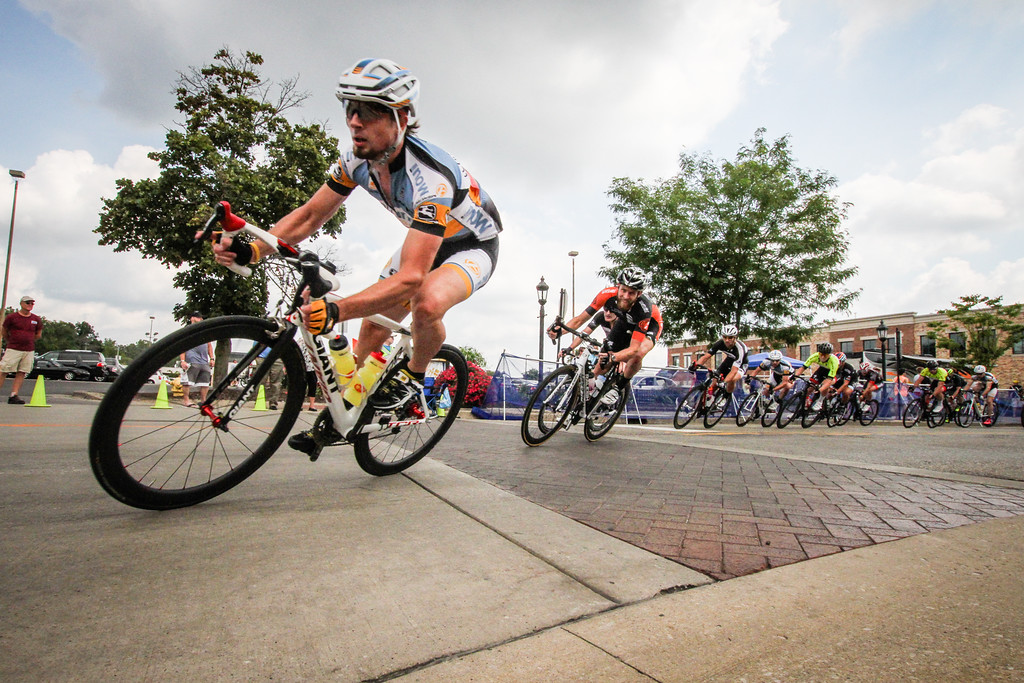
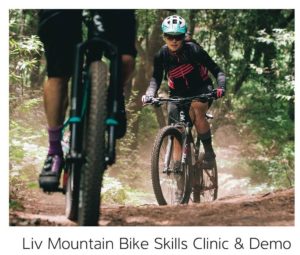


 What does it take to elevate your game? Ask Alex Cannon, who has had a burning desire since age 8 to play on a Detroit team.
What does it take to elevate your game? Ask Alex Cannon, who has had a burning desire since age 8 to play on a Detroit team.
